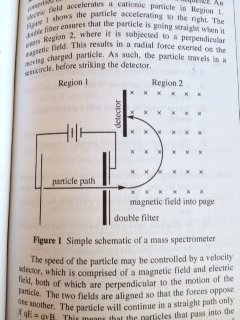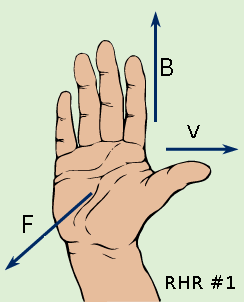Confused by RHR for magnetic fields...
TBR Chapter 8, Passage VI Question 41 states:
To accelerate anion particles from left to right in Region 1, and deflect those particles out of the page in Region 2, how must the E and B fields be aligned in Figure 1?
A) Anode plate left, cathode plate right, B field up
B) Anode plate left, cathode plate right, B field down
C) Anode plate right, cathode plate left, B field up
D) Anode plate right, cathode plate left, B field down
The answer is: D, I chose C. I'm messing up my RHR rule even though I've gotten every RHR question right. Okay, so thumb mights from left to right, fingers all point OUT of the page as stated in the question, so Fb should point downwards... but it's a negative charge, so shouldn't Fb point UP? What am I doing wrong?

TBR Chapter 8, Passage VI Question 41 states:
To accelerate anion particles from left to right in Region 1, and deflect those particles out of the page in Region 2, how must the E and B fields be aligned in Figure 1?
A) Anode plate left, cathode plate right, B field up
B) Anode plate left, cathode plate right, B field down
C) Anode plate right, cathode plate left, B field up
D) Anode plate right, cathode plate left, B field down
The answer is: D, I chose C. I'm messing up my RHR rule even though I've gotten every RHR question right. Okay, so thumb mights from left to right, fingers all point OUT of the page as stated in the question, so Fb should point downwards... but it's a negative charge, so shouldn't Fb point UP? What am I doing wrong?
Last edited:


